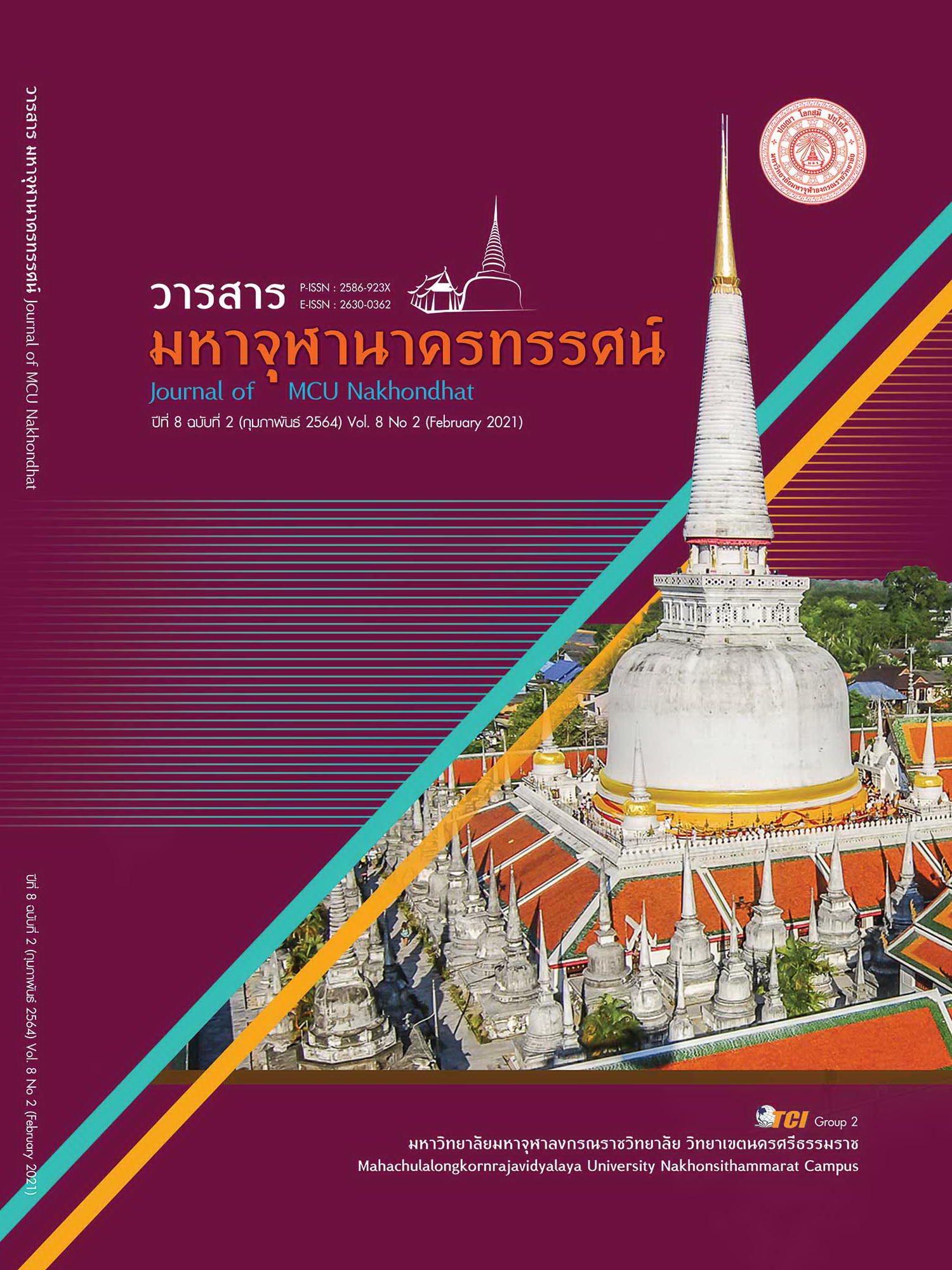CREATIVE QUILT ART LEARNING ENHANCEMENT FOR YOUTH AND ELDERLIES IN LANNA PROVINCES
Main Article Content
Abstract
This study aimed to pass on knowledge and skills in terms of creative quilt artworks to youth and elderlies. The mixed methods research designs were integrated in this study such as documentary research, qualitative and quantitative research, as well as participatory action research. The 5 keys informants used in the interview consisted of presidents and representatives of quilt art group, quilt art traders, community leaders, and local scholars. Additionally, the 10 participants used in focus group discussion were quilt art traders, experts of quilt art design, and officers from Phrae Chamber of Commerce, Provincial Administrative Organization, Tourism Authority of Thailand, Provincial Community Development Office of Phrae, Phrae Provincial Cultural Office, and Phrae Provincial Industry Office. The 60 subjects consisted of quilt art traders, youth, and elderlies were used in data collection processes of action research, to help understand the contexts and participants’ ideas. The keys informants totaling 75 people. The research instruments were in - depth interview and focus group discussion relating to learning enhancement of creative quilt art as well as and quilting short course public training. Data analysis was done using content analysis through the consideration of main issues and dividing those into sub - issues. The results revealed that as knowledge and skills of creative quilt artworks were transmitted to youth and elderlies, they could create creative new products, which presented their local identities and met the customers’ needs. Moreover, the finding indicated that their opinion and attitude’ s level towards creative quilt artworks transmission, before and after the short course public training, was different at statistical significance level of 0.01. Most importantly, passing on knowledge of creative quilt artworks not only enhanced economic and community development, but also made youth in community realize the importance of their local wisdom, leading to sustainable inheritance.
Article Details
References
กีรติ บุญเจือ. (2545). ปรัชญาหลังนวยุค แนวคิดเพื่อการศึกษาแผนใหม่. กรุงเทพมหานคร: ดวงกมล.
จารุวรรณ ธรรมวัตร. (2548). วิเคราะห์ภูมิปัญญาอีสาน. กาฬสินธ์: สำนักพิมพ์ จินตาภัณฑ์การพิมพ์.
เด่นพงษ์ วงศาโรจน์. (2543). แนวทางการสร้างสรรค์ผลงานร่วมสมัย, ในศิลปะวิจัย. กรุงเทพมหานคร: สันติศิริการพิมพ์.
ตระกูลพันธ์ พัชรเมธา. (2559). ผลิตภัณฑ์หัตถกรรมกับการพัฒนาสู่สินค้าหนึ่งตำบลหนึ่งผลิตภัณฑ์. วารสารมหาวิทยาลัยศิลปากร ฉบับภาษาไทย, 36(1), 71-73.
ทิศนา แขมมณี. (2554). ศาสตร์การสอน: องค์ความรู้เพื่อการจัดกระบวนการเรียนรู้ที่มีประสิทธิภาพ. (พิมพ์ครั้งที่ 14). กรุงเทพมหานคร: สำนักพิมพ์แห่งจุฬาลงกรณ์มหาวิทยาลัย.
ยุทธนา แซ่เตียว. (2547). การวัด การวิเคราะห์ และการจัดการความรู้ สร้างองค์กรอัจฉริยะ. กรุงเทพมหานคร: สถาบันเพิ่มผลผลิตแห่งชาติ.
รุ่ง แก้วแดง. (2541). การนำภูมิปัญญาไทยเข้าสู่ระบบการศึกษา. กรุงเทพมหานคร: สำนักงานคณะกรรมการการศึกษาแห่งชาติ.
วัชรินทร์ จรุงจิตสุนทร. (2548). หลักการและแนวคิดการออกแบบผลิตภัณฑ์. ชลบุรี: มหาวิทยาลัยบูรพา.
วิชัย วงษ์ใหญ่. (2554). การพัฒนาหลักสูตรระดับอุดมศึกษา. (พิมพ์ครั้งที่ 2). กรุงเทพมหานคร: บริษัท อาร์แอนด์ ปริ้นจำกัด.
วิรุณ ตั้งเจริญ. (2547). ศิลปะหลังสมัยใหม่. กรุงเทพมหานคร: อีแอนด์ไอคิว.
ศศิพร ต่ายคำ และนรินทร์ สังข์รักษา. (2558). การพัฒนารูปแบบผลิตภัณฑ์สร้างสรรค์เพื่อเพิ่มมูลค่าของวิสาหกิจชุมชนจังหวัดราชบุรี. Veridian E - Journal, Silpakorn University ฉบับภาษาไทย สาขามนุษยศาสตร์ สังคมศาสตร์ และศิลปะ, 8(1), 611-616.
สำนักงานคณะกรรมการพัฒนาการเศรษฐกิจและสังคมแห่งชาติ. (2559). แผนพัฒนาเศรษฐกิจและสังคมแห่งชาติ ฉบับที่สิบสอง พ.ศ. 2560 - 2564. กรุงเทพมหานคร: สำนักนายกรัฐมนตรี.
อัจฉรา ภาณุรัตน์. (2549). รวมภูมิปัญญาไทย. กรุงเทพมหานคร: อมรินทร์พริ้นติ้ง แอนพับลิชชิ่ง จำกัด.
Beauchamp, G. A. (1984). Curriculum Theory. (3rd ed.). Lllinois: The Kagg Press.


